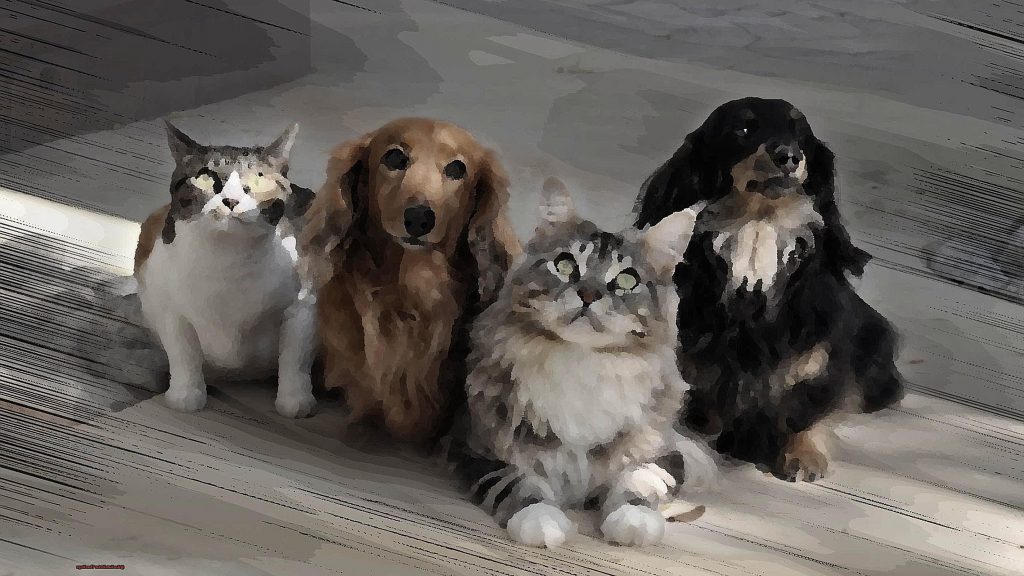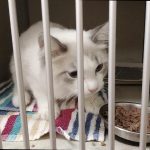It’s a never-ending battle. And when it comes to cleanliness, there’s no shortage of opinions.
Are cats really dirtier than dogs? As a cat owner, I’ve heard this argument countless times from my dog-loving friends.
They say cats are standoffish and messy, while dogs are loyal and pristine. But is there any truth behind these claims?
So hold on tight, pet lovers – things are about to get real.
Are Cats Dirtier Than Dogs?
Contents
As pet owners, we all want to provide the best care for our furry friends. And when it comes to cats and dogs, there’s always been an ongoing debate about which one is cleaner and more hygienic. Are cats really as clean as they are portrayed to be, or do dogs take the crown when it comes to cleanliness? Let’s discover the truth behind this age-old question.
First and foremost, let’s address the common stereotype that cats are cleaner than dogs. While cats are known for their fastidious nature and constant self-grooming, this doesn’t necessarily mean they are cleaner overall. In fact, a study by the National Institutes of Health (NIH) found that cats have less bacteria in their mouths compared to dogs. However, this doesn’t take into account the fact that cats groom themselves by licking their fur, which can spread bacteria. So while they may have less bacteria in their mouths, it’s important to keep their grooming habits in check to maintain their cleanliness.
Another factor to consider is the type of litter box used for cats. If not cleaned regularly, litter boxes can become breeding grounds for bacteria and parasites. This can not only make your cat sick but also pose a health risk for you and your family. On the other hand, dog owners are more likely to pick up after their pets when they go to the bathroom outside, reducing the risk of bacterial contamination in their living space.
But it’s not just about shedding and litter box maintenance. Each individual cat or dog may have different levels of cleanliness depending on their breed, age, and overall health. For example, older cats may not groom themselves as efficiently leading to a buildup of dirt and bacteria on their fur. Similarly, dogs with skin conditions may require more frequent baths and grooming to maintain their cleanliness.
So what’s the bottom line? It ultimately depends on the individual pet and how well they are taken care of by their owner. Both cats and dogs can be kept clean with proper care and hygiene practices. Here are some tips for maintaining cleanliness in your household:
Shedding: A Key Factor in Determining Cleanliness
As much as we love our feline friends, there’s no denying that they can leave a trail of fur wherever they go. From the couch to our clothes, it seems like there’s no escaping the endless shedding. But fear not, cat owners. With a little understanding and some helpful tips, you can keep your home clean and your cat happy.
Understanding the Differences in Shedding Habits
First things first, it’s important to understand that cats and dogs have very different shedding habits. Cats have fewer and shorter hair follicles compared to dogs, which means they typically shed less. However, what makes cats unique is their fastidious grooming habits. While this may seem like a good thing, it can actually lead to more shedding. The loose fur and hairballs that are ingested during grooming often end up being regurgitated, giving the illusion of more shedding.
On the other hand, dogs may require more frequent brushing and grooming to control their shedding. But unlike cats, they are less likely to jump onto furniture and surfaces, leaving behind a trail of fur.
Managing Your Cat’s Shedding
What can you do as a cat owner to manage all that shedding? Here are some tried-and-true tips:
- Regular Brushing: The best way to control shedding is by regularly brushing your cat. This helps remove loose fur before it ends up all over your home.
- Use the Right Tools: Different types of cats require different types of brushes. For short-haired cats, a rubber brush or grooming mitt may be most effective, while long-haired cats may benefit from a slicker brush or de-shedding tool.
- Grooming Wipes: For those hard-to-reach areas or for cats who dislike being brushed, grooming wipes can be a handy alternative. These pre-moistened wipes are specifically designed to remove loose fur and dirt from your cat’s coat.
- A Healthy Diet: A balanced and nutritious diet can also help reduce shedding. Consult with your veterinarian to ensure your cat is getting the right nutrients for a healthy coat.
- Vacuum Regularly: It’s always a good idea to vacuum your home regularly, especially if you have a cat. This helps pick up any loose fur and reduces the amount of hair that ends up on your furniture and floors.
Grooming Habits: How Cats and Dogs Keep Themselves Clean
As pet owners, we all know how important it is to keep our furry friends clean and well-groomed. But have you ever wondered about the different ways in which cats and dogs keep themselves clean? In this section, we will explore the unique grooming habits of our beloved feline and canine companions.
Cats are known for their meticulous self-grooming, spending up to 50% of their waking hours grooming themselves. This is because they have a natural instinct to keep themselves clean and tidy. One of the main reasons for this is their rough tongue, which acts as a natural brush to remove loose fur and debris from their coat. This helps to prevent matting and keeps their fur looking healthy and shiny.
But that’s not all – cats also have special glands on their face and tail that produce oils to keep their coat moisturized and well-nourished. These oils not only contribute to a shiny coat but also help to prevent skin irritation. However, this self-grooming can also lead to hairballs in cats, which can be a messy and unpleasant issue for both cats and their owners.
On the other hand, dogs do not groom themselves as extensively as cats do. They rely more on their owners to brush and groom them regularly to maintain a clean coat. This is especially important for longer-haired dog breeds, as they are more prone to matting and tangling if not properly groomed. Regular brushing also helps to distribute natural oils throughout the coat, keeping it healthy and shiny.
Unlike cats, dogs do not have the same grooming instincts, so they may not clean themselves as thoroughly or frequently. This can lead to a build-up of dirt and debris in their coat, making them appear dirtier than cats.
Litter Box Maintenance vs. Outdoor Waste Disposal
It’s no secret that cats are known for their cleanliness and self-grooming habits. However, when it comes to maintaining a litter box, it can be a messy and unpleasant task. On the other hand, dogs are typically taken outside for their bathroom needs, which may involve picking up their waste and disposing of it properly.
Some cat owners may argue that litter box maintenance is easier than cleaning up after a dog’s outdoor waste, as the litter box can be easily scooped and cleaned daily.
However, it’s important to note that litter boxes need to be emptied and thoroughly cleaned at least once a week to prevent odors and bacteria buildup.
On the other hand, outdoor waste disposal for dogs also has its own challenges. In some cases, dog owners may not have access to a proper disposal area and may have to carry the waste with them until they find one.
Cleanliness and Health Hazards:
While litter box maintenance may seem like a cleaner option compared to outdoor waste disposal for dogs, it’s important to remember that both methods have their own challenges. Litter boxes need to be emptied and cleaned regularly to prevent odors and bacteria buildup, which can be time-consuming and unpleasant. Moreover, cats may track litter out of their litter box, causing messes around the house. This can be especially problematic if the litter contains dust or small particles that can irritate allergies or respiratory issues in humans or other pets.
Outdoor waste disposal for dogs also has its own set of challenges. If not properly disposed of, dog waste can lead to environmental pollution and potential health hazards for humans and other animals. Additionally, dogs may track dirt and debris from outside into the house after going to the bathroom, leading to extra cleaning and potential messes inside the house.
Environmental Factors: The Importance of a Clean Living Space for Pets

From their meticulous grooming habits to their preference for a designated bathroom area, cats have a natural instinct to keep themselves clean. But did you know that the environment in which they live can also impact their cleanliness? Here are five tips for maintaining a clean living space for your feline companion.
Regular Litter Box Maintenance
One of the most important tasks for cat owners is keeping the litter box clean. Cats are known for their fastidious nature and prefer a clean and odor-free litter box. It’s recommended to scoop waste at least once a day and completely replace the litter every two weeks. This not only keeps your cat happy but also helps prevent any potential health hazards.
Invest in High-Quality Litter
Using a high-quality litter not only helps in controlling odors but can also make cleaning easier. Look for litter that clumps well and is easy to scoop, reducing the overall maintenance of the litter box.
Grooming is Key
Cats are natural groomers, but brushing them regularly can help reduce shedding and prevent fur from accumulating around your home. It also gives you an opportunity to bond with your cat while keeping them clean and healthy.
Keep Their Living Space Tidy
Cats are territorial animals, and they prefer a clean and organized living space. Regularly vacuuming and dusting their area not only helps keep their space clean but also prevents any potential health hazards from bacteria or allergens.
Consider Your Cat’s Breed and Size
Some cat breeds produce less dander and shed less than others, making them more suitable for those with allergies or those who prefer a cleaner living space. Additionally, smaller cats may require less space and have less of an impact on the cleanliness of their surroundings compared to larger breeds.
Bathing and Grooming: Essential for Maintaining a Clean Pet
Many cat owners may wonder if their feline friends need regular bathing and grooming since they are known for their fastidious self-grooming habits. The truth is, while cats may groom themselves, they still need some help from their human companions to maintain a clean and healthy coat.
Bathing a cat may seem like a daunting task, especially if you have a water-averse feline. But it is important to note that occasional baths are essential for removing dirt and oils from their fur. This is especially important for outdoor cats who may come into contact with various outdoor elements. So how can you make the bathing experience more pleasant for both you and your cat?
Firstly, it is best to start introducing your cat to baths at a young age. This will help them become more comfortable with the process as they grow older. Use a gentle cat-specific shampoo and lukewarm water to avoid irritating their skin. Also, make sure to rinse thoroughly to avoid any shampoo residue that could cause skin irritation.
Regular grooming is also crucial for maintaining a clean pet. Brushing your cat’s coat helps remove loose fur, dirt, and dander, preventing matting and tangles. It also helps distribute natural oils, keeping their coat shiny and healthy. Long-haired cats may require more frequent grooming sessions to prevent matting, which can lead to skin irritation and discomfort.
Trimming your cat’s nails is also an essential part of grooming. Not only does it prevent them from scratching your furniture, but it also helps maintain good hygiene. Overgrown nails can harbor dirt and bacteria, leading to infections or ingrown nails.
Just like cats, dogs also need regular baths and grooming sessions to keep them clean and healthy. However, their needs may differ depending on their breed and coat type. Some breeds may require more frequent baths due to their active lifestyle and tendency to get dirty, while others may only need occasional grooming.
Health Concerns Associated with Poor Hygiene in Cats and Dogs
Don’t let your furry friend’s adorable appearance fool you – cats and dogs are not immune to health concerns associated with poor hygiene. While cats are known for their grooming habits, they still require proper care to avoid potential issues such as hairballs, skin infections, and dental problems. Similarly, dogs need regular grooming and dental care to prevent skin infections and ear infections. Neglecting hygiene can also have a negative impact on their overall health.
Hairballs are a common concern for cat owners, as these pesky balls of fur can cause digestive issues and even blockages in the intestines. To prevent hairballs, make sure to groom your cat regularly and keep their litter boxes clean. Speaking of litter boxes, they can also harbor harmful bacteria and parasites if not cleaned regularly. Not only can this affect your cat’s health, but it can also put humans and other animals at risk.
Dogs, on the other hand, are more prone to skin infections due to poor hygiene habits. Regular grooming and bathing can help prevent these issues, along with keeping their bedding clean. Dental problems are also a concern for dogs, with plaque and tartar buildup leading to periodontal disease. This can cause pain and affect their overall health.
In addition to these specific concerns, poor hygiene can weaken your pet’s immune system, making them more susceptible to illnesses and infections. By taking proper care of your pet’s hygiene, you can prevent these issues and ensure that they live happy and healthy lives.
So what can you do to maintain your pet’s hygiene? Regular grooming, cleaning of litter boxes and bedding, and providing dental care for dogs are all important steps. It may take some time and patience to get your pet used to grooming or bathing, but starting at a young age and using gentle products can make the experience more pleasant for both of you.
Conclusion
In conclusion, the never-ending debate of whether cats or dogs are cleaner will continue to spark discussions among pet owners. However, after thoroughly examining the facts, it’s evident that both animals have their own distinct grooming habits and requirements.
While cats may be known for their meticulous self-grooming, they still need regular maintenance and care from their owners to keep them clean and healthy. On the other hand, dogs rely more on their owners for grooming and cleaning, but with proper attention, they can also maintain a high level of cleanliness.
Factors such as shedding, litter box maintenance versus outdoor waste disposal, environmental conditions, and bathing and grooming all contribute to determining the overall cleanliness of our pets. It is crucial for pet owners to understand these factors and take necessary measures to ensure their furry friend’s hygiene is maintained.
Moreover, neglecting hygiene can lead to various health concerns for both cats and dogs. From hairballs to skin infections and dental issues, poor hygiene can have a detrimental impact on our pet’s well-being. By taking good care of our pets’ hygiene needs, we not only ensure their health but also create a clean and hygienic environment for ourselves.
So whether you’re a passionate cat lover or an enthusiastic dog owner, let’s all agree that both animals deserve love and proper care to remain happy and healthy companions in our lives.






